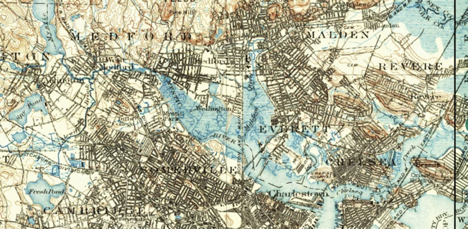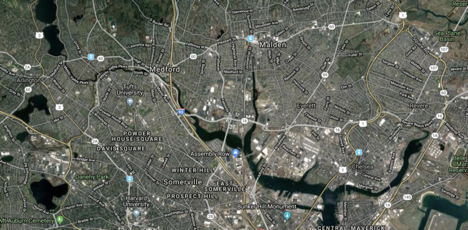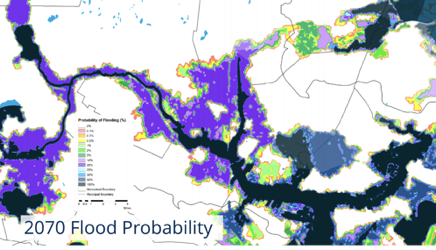by Julie Wormser
Sierra Club members know that climate change is real and accelerating. July 2019 was the hottest on record, both globally and locally. Hurricanes in Houston, wildfires in the Amazon and the Arctic. The news is so big and so bleak. What does it mean for us here in Massachusetts, and what can we do about it?
We do have some good news to share. Colleagues at the Mystic River Watershed Association (MyRWA) are working with 15 neighboring communities to help prepare people and places for climate-related extreme weather. In June 2019, the Resilient Mystic Collaborative (RMC) received over $1.1 million in funding for regional climate resilience activities. “Our local communities recognize that preparing for climate change needs to happen now, and that we are stronger together,” said Patrick Herron, MyRWA Executive Director.
“If climate mitigation is largely about energy, climate preparedness is all about water—too much and too little,” added MyRWA Deputy Director Julie Wormser, who co-facilitates the Resilient Mystic Collaborative. “Non-profit watershed associations have a role to play in helping communities manage their common challenges.”
Stretching from Woburn through the northern shoreline of Boston Harbor to Revere, the Mystic is one of the most densely populated, urbanized watersheds in New England. Mystic is an Anglicized version of the Pequot word missi-tuk, meaning “a great river whose waters are driven into waves by tides or wind.” Its original tidal influence was extensive, reaching up, for example, to what is now the Alewife MBTA station in Cambridge and far into Malden.

USGS map from 1900 showing extent of coastal marshes along the Mystic River. Credit: MapJunction.com
Mystic Watershed communities are already experiencing the effects of climate change: hotter, drier summers; freshwater and coastal flooding; higher winds; and unpredictable seasons. With nearly fifty percent of the watershed developed and paved, heavier rain events mean more widespread stormwater flooding. Once filled-in tidal rivers and marshes now represent growing risks of chronic flooding.
In the 1960s, the Amelia Earhart Dam was built between Everett and Somerville, blocking the tide. The river was straightened and many acres of marshes were filled in and developed. Record Nor’easters in January and March 2018 came within 18 inches of overtopping the dam, prompting its owner, the Massachusetts Department of Conservation and Recreation, to plan for a time when the dam could no longer hold out the tide.
The illustrations below show how projected coastal flooding with 3.5 feet of sea level rise would return communities to the shorelines people experienced 120 years ago. Since then, however, these marshes have been developed into homes, businesses and infrastructure, none of which is prepared for chronic salt water flooding.

2019 Google map showing how much the Mystic has been filled in

Probability of flooding during a 1/100 storm in 2070. Credit: Woods Hole Group
Managing a changing coastline, along with stronger storms and longer heatwaves, will require communities pulling together on regional strategies and investments. “Somerville can’t go it alone when it comes to preparing for the effects of a changing climate,” said Somerville Mayor Joe Curtatone. “That’s why we are so committed to working with neighboring municipalities and partners in the Resilient Mystic Collaborative.”
“We are ready to face the challenges of urban heat islands, flooding, stormwater management, and more head on,” said Everett Mayor Carlo DeMaria. “We feel strongly that working and learning from our neighboring communities will only continue to benefit our residents and the natural environment that surrounds us.”
For more information visit the Resilient Mystic Collaborative.
Julie Wormser is the Deputy Director of Mystic River Watershed Association and co-facilitates the Resilient Mystic Collaborative (RMC).